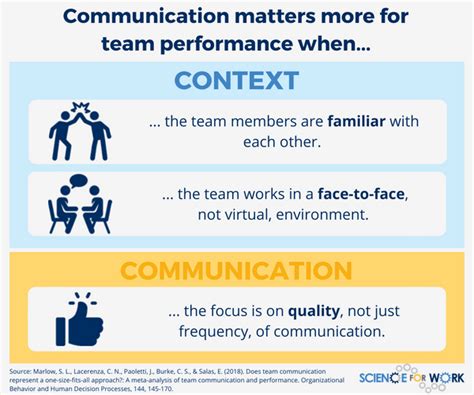Explore the critical role of communication in lacrosse, enhancing team strategies, building trust, and improving performance through effective dialogue and real-time adjustments.In the fast-paced world of lacrosse, where split-second decisions can determine the outcome of the game, effective communication is paramount. This article explores the vital role that team communication plays in enhancing overall performance and strategy on the field. By fostering open dialogue and building trust among teammates, players can better navigate the complexities of the game. From honing game strategies to making real-time adjustments, understanding and prioritizing communication is essential for any successful lacrosse team. Join us as we delve into how improved communication not only strengthens team dynamics but also elevates performance, ensuring every player can contribute to a cohesive and winning effort.
Understanding The Importance Of Communication In Lacrosse
In the fast-paced game of lacrosse, effective communication is vital for the success and cohesion of the team. The importance of clear communication cannot be overstated; it influences the overall team dynamic and impacts each player’s performance. When players communicate well, they create a shared understanding of strategies, contribute to better decision-making, and establish a strong bond that fosters teamwork.
Firstly, communication in lacrosse serves as a means for players to effectively relay information about positioning, ball movement, and defensive formations. Players need to vocalize their intentions—whether it’s calling for the ball or directing teammates during a transition—thus ensuring everyone remains on the same page. This real-time interaction reduces confusion and allows for a quicker response to game situations.
Moreover, the importance of communication extends beyond verbal cues. Non-verbal signals, such as eye contact or hand gestures, also play a significant role in conveying messages during high-pressure moments when loud sounds can drown out verbal calls. By developing an intuitive understanding of each other’s signals, teams can maintain a seamless flow of play, even in the most chaotic stretches of the game.
Additionally, fostering an environment where communication is encouraged leads to greater trust among teammates. When players feel comfortable expressing their thoughts and concerns, it enhances team morale and cohesion. They are more likely to support each other during challenging moments, further exemplifying why the importance of communication transcends the field and impacts team relationships.
Understanding and valuing communication within a lacrosse team significantly contributes to building a successful and resilient squad capable of navigating the complexities of the game. It emphasizes the necessity of being proactive in addressing issues, providing feedback, and collaborating to achieve common goals—all critical components in elevating a team’s overall performance.
How Effective Communication Enhances Team Strategies
Effective communication is the backbone of successful lacrosse teams. It fosters a collaborative environment where players can share their insights and observations, ensuring that everyone is aligned with the team’s objectives. When players communicate openly, they can more readily identify strengths and weaknesses, allowing for the development of dynamic game strategies.
One key aspect of enhancing team strategies through communication is the establishment of clear roles and responsibilities. By discussing individual positions and responsibilities openly, players can better understand their specific contributions to the team’s success. This clarity helps to minimize confusion during high-pressure game situations and empowers players to make informed decisions.
Additionally, regular team meetings and practice sessions provide an opportunity for players to exchange ideas and refine strategies. These discussions can cover various topics, from offensive plays to defensive formations, leading to a more cohesive unit on the field. The stronger the communication, the better the players can adapt to changes and unexpected situations during games.
Moreover, the ability to communicate effectively allows teams to implement feedback loops where players can voice suggestions or concerns about existing strategies. This encourages a growth mindset within the team, as players feel valued and empowered to improve collectively.
Ultimately, the importance of communication in enhancing team strategies cannot be overlooked. It not only aids in creating a flexible and responsive game plan but also cultivates a sense of unity and trust within the squad, leading to improved overall performance.
Building Trust Through Open Dialogue Among Team Members
In sports like lacrosse, where teamwork is essential for success, building trust among team members is critical. The Importance of fostering open dialogue cannot be overstated, as it creates an environment where players feel comfortable sharing their thoughts, ideas, and concerns. This open communication leads to stronger bonding and enhances camaraderie within the team.
When team members engage in honest discussions, they not only share tactical insights but also personal challenges. This type of vulnerability encourages teammates to support one another, significantly enhancing the collective morale of the team. Trust built through open dialogue leads to increased accountability, as each player understands their role and the expectations set by others. Moreover, team members are more likely to accept constructive feedback when they feel respected and understood.
To facilitate this open communication, coaches should encourage regular meetings, both in formal and informal settings. Establishing a culture where players can voice their opinions and concerns without fear of judgment is essential. Such an atmosphere nurtures intelligence and creativity, allowing players to engender a collaborative spirit, which is vital for any lacrosse team striving for excellence.
Furthermore, during practice sessions, creating scenarios where teammates must communicate under pressure can mimic real game situations. This practice not only builds communication skills but also strengthens the trust between players, making it easier for them to rely on each other during critical moments of a match. Ultimately, the commitment to maintaining open dialogue fosters a culture of trust, which is a cornerstone of any successful lacrosse team.
The Role Of Communication In Real-Time Game Adjustments
In the fast-paced world of lacrosse, the ability to make instant game adjustments is critical for success. The Importance of effective communication in these moments cannot be overstated, as it serves as the backbone for executing strategic changes and adapting to the dynamics of the game.
During a match, situations can shift rapidly, and teams must be prepared to respond. This is where communication steps in; players must convey information regarding opponent movements, defensive gaps, or changing matchups in real-time. A clear verbal or non-verbal exchange can alert teammates to opportunities or threats, ensuring everyone is on the same page.
Moreover, effective communication allows for fluid transitions between offensive and defensive plays. For example, when a team gains possession, quick communication can facilitate a fast break, where players efficiently signal their positions and intentions. Conversely, upon losing the ball, players can swiftly inform one another to transition into a defensive formation, minimizing the risk of conceding a goal.
Additionally, coaches play an essential role in this communicative process. By providing concise instructions during timeouts or breaks, they can guide their teams to make necessary adjustments. When players understand the coach’s strategy and can articulate their ideas or concerns, the effectiveness of these adjustments is greatly increased.
The role of communication in real-time game adjustments is foundational for team success in lacrosse. By emphasizing The Importance of clear dialogue and quick information exchange during gameplay, teams can enhance their adaptability, ensuring they are not only reactive but also proactive on the field.
Improving Team Performance By Emphasizing The Importance Of Communication
Effective communication is a cornerstone of success in any team sport, and lacrosse is no exception. The importance of clear and concise communication cannot be overstated, as it serves as the bedrock for fostering teamwork and synergy among players. By prioritizing communication, teams can enhance their overall performance in several key ways.
First, consistent communication helps players understand their roles and responsibilities on the field. When each player is aware of their tasks, it reduces confusion during critical moments of play, allowing for more fluid transitions and better execution of strategies. This clarity directly correlates with improved execution during both offensive and defensive plays.
Moreover, regular communication fosters a sense of unity and trust within the team. When players feel comfortable sharing their thoughts and strategies, they are more likely to collaborate effectively. This camaraderie enhances on-field interactions and builds a collective mindset that is vital during high-pressure game situations.
Additionally, communication allows for immediate feedback, enabling players to adjust their techniques and strategies in real-time. This ability to adapt quickly is essential in a fast-paced game like lacrosse, where circumstances can change rapidly. By emphasizing the need for open dialogue, teams can better recognize their strengths and weaknesses, leading to tactical improvements.
Emphasizing the importance of communication within a lacrosse team not only fosters trust and understanding among players but also leads to significant improvements in performance. By nurturing a culture of communication, teams are better equipped to face challenges, enhance teamwork, and ultimately achieve their competitive goals.
Frequently Asked Questions
Why is team communication crucial in lacrosse?
Team communication is crucial in lacrosse because it enhances coordination, promotes strategic execution, and helps players anticipate each other’s movements, leading to improved teamwork and effectiveness on the field.
What are some effective communication strategies for lacrosse teams?
Effective communication strategies for lacrosse teams include using specific verbal calls during plays, practicing non-verbal signals, conducting regular team meetings, and encouraging open dialogue among players.
How can poor communication affect a lacrosse game?
Poor communication can lead to mistakes, confusion during plays, missed opportunities, and ultimately, a decline in overall team performance and morale, giving opponents an advantage.
What role does practice play in improving team communication?
Practice plays a significant role in improving team communication by allowing players to develop their verbal and non-verbal cues, build trust, and engage in situational drills that enhance understanding of team tactics.
How can coaches facilitate better communication among players?
Coaches can facilitate better communication by creating an environment that encourages feedback, setting clear expectations for communication during practice and games, and utilizing drills that emphasize teamwork and interaction.
What technologies can support communication in lacrosse training?
Technologies such as video analysis software, team messaging apps, and wearable devices can support communication by providing players with insights into their performance and facilitating discussions about strategies.
Can strong team communication impact player relationships?
Yes, strong team communication can significantly impact player relationships by fostering trust, collaboration, and camaraderie, resulting in a more cohesive unit both on and off the field.








